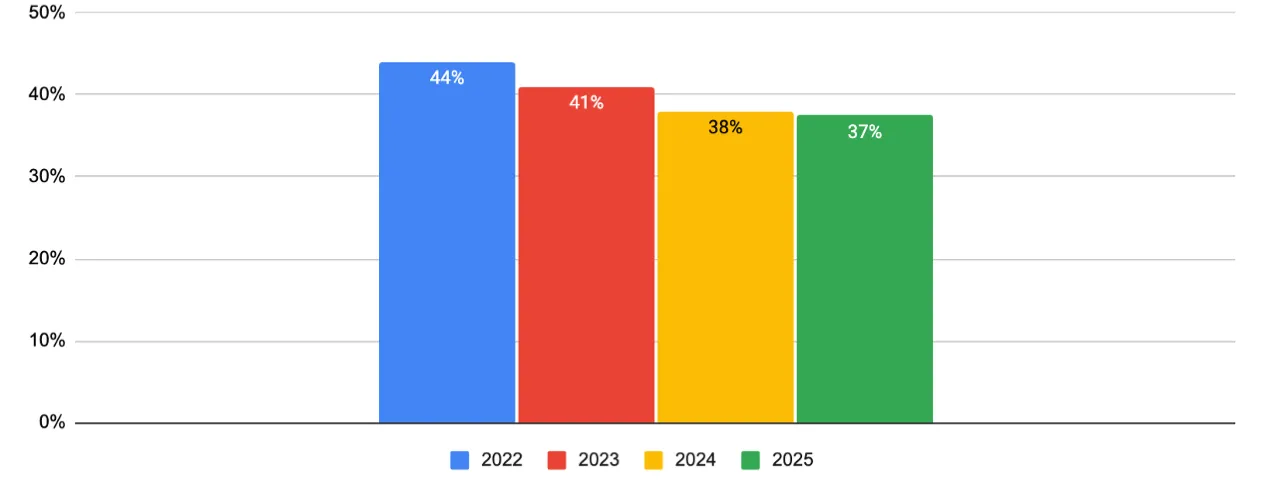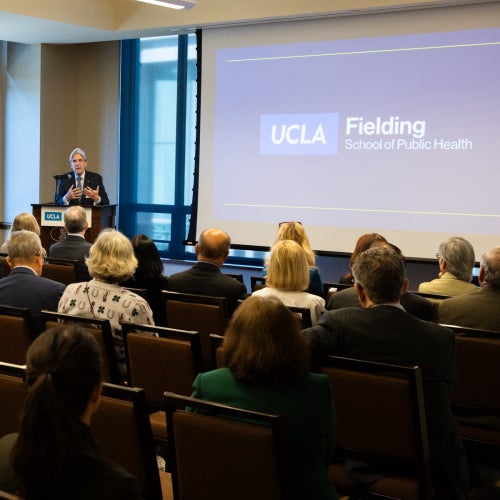For the third year in a row, college students are reporting lower rates of depression, anxiety, and suicidal thoughts, research shows
“2024-2025 Healthy Minds Study,” co-led by UCLA Fielding’s Dr. Daniel Eisenberg, also surveys faculty and staff.

College students’ reports of depression, anxiety, and suicidal thoughts have continued to move in a positive direction, the third year in a row of such improvements since 2022, researchers have found.
The 2024-2025 Healthy Minds Study, conducted annually by researchers from UCLA, the University of Michigan, Boston University (Massachusetts), and Wayne State University (Michigan), under the leadership of the Healthy Minds Network based at Michigan, received responses from more than 84,000 students from 135 colleges and universities and 9,000-plus faculty and staff members from 22 institutions - the second year of surveying campus employees.
“While overall access to mental health services seems to be similar to previous years, the good news is that students are accessing an increasingly diverse array of resources,” said Dr. Daniel Eisenberg, a co-principal investigator on the project and professor in the UCLA Fielding School of Public Health’s Department of Health Policy and Management “Digital and mobile services are evolving rapidly and are now popular among students. An important challenge in the coming years will be to help students make sense of their many options and help them access something that will be a good fit for their needs and preferences.”
Student survey results show continuing declines, including severe depression dropping to 18% in 2025 from 23% in 2022 and suicidal thoughts decreasing to 11% this year from 15% three years ago.
“These sustained reductions tell me this is not a blip. Whether it's distance from the pandemic, better institutional support or something else driving the change, I think this is a promising counternarrative to what seems like constant headlines around young people's struggles with mental health," said Dr. Justin Heinze, associate professor of health behavior and health equity at U-M's School of Public Health and a co-principal investigator of the study.
The study, which began in 2007, is web-based, confidential, and tracks mental health trends and students' behaviors over time through questions about mental and emotional health, habits with alcohol and substances, use of mental health care and more. The study is funded by partnerships and participating universities and colleges.
While positive trends continue, levels of flourishing, or psychological well-being marked by self-esteem, purpose and optimism, dropped slightly to 36% after reaching 38% in 2024. Yet, while decreasing, more than half of students still reported loneliness.
Key findings for students demonstrating improvement over time include:
- Moderate-to-severe depressive symptoms dropped from 44% in 2022 to 37% in 2025 while reports of severe depression decreased from 23% to 18%.
- Moderate-to-severe anxiety symptoms fell from 37% in 2022 to 32% in 2025.
- Students who seriously considered suicide in the past year dropped from 15% in 2022 to 11% in 2025.
- Students reporting high levels of loneliness decreased from 58% in 2022 to 52% in 2025.
Mental health service use has remained stable over the last four years with about 37% of students receiving therapy or counseling in the past year, and 30% taking psychiatric medication. Among students showing depression or anxiety symptoms, 60% received clinical mental health treatment. The top barriers to mental health treatment remain lack of time, finances, and preferring to handle issues independently.
Findings in the study's report on faculty and staff include:
- 16% met criteria for depression and 17% showed signs of anxiety.
- 27% reported feeling burned out by work to a high or very high degree.
- 47% reported having one-on-one conversations with students about mental health in the past year.
- 81% say student mental health is significantly worse now compared to the start of their careers.
- 37% received therapy or counseling in the past year, 35% took psychiatric medication, and 71% received some form of clinical treatment.
The faculty data reveals broader implications for campus mental health climate, said Dr. Sarah Ketchen Lipson, a co-principal investigator and associate professor of health law, policy and management at the Boston University School of Public Health. About half of faculty and staff surveyed said they have conversations with students about mental health, and most recognize worsening trends. However, about half are not confident recognizing a student in distress.
“These findings underscore both the critical role that faculty and staff are playing in supporting students and the opportunity for institutions to provide training and resources that will strengthen their capacity to respond,” Lipson said. “Bringing training into existing spaces where faculty and staff time is required also sends an important message by the institution that mental health is integral to the overall mission.”
Dr. Sasha Zhou, assistant professor in the Department of Public Health at Wayne State and a co-principal investigator, said that while student mental health is improving overall, some groups still struggle more and use treatment services less.
“These disparities have been persistent in the last decade and underscore that there's more work to be done to close the gap in mental health support,” she said. “Emerging research suggests that affinity-based peer support programs, curriculum-integrated psychoeducation and adaptations of social/emotional learning approaches show promise in supporting the mental health of underrepresented or overlooked students.”

